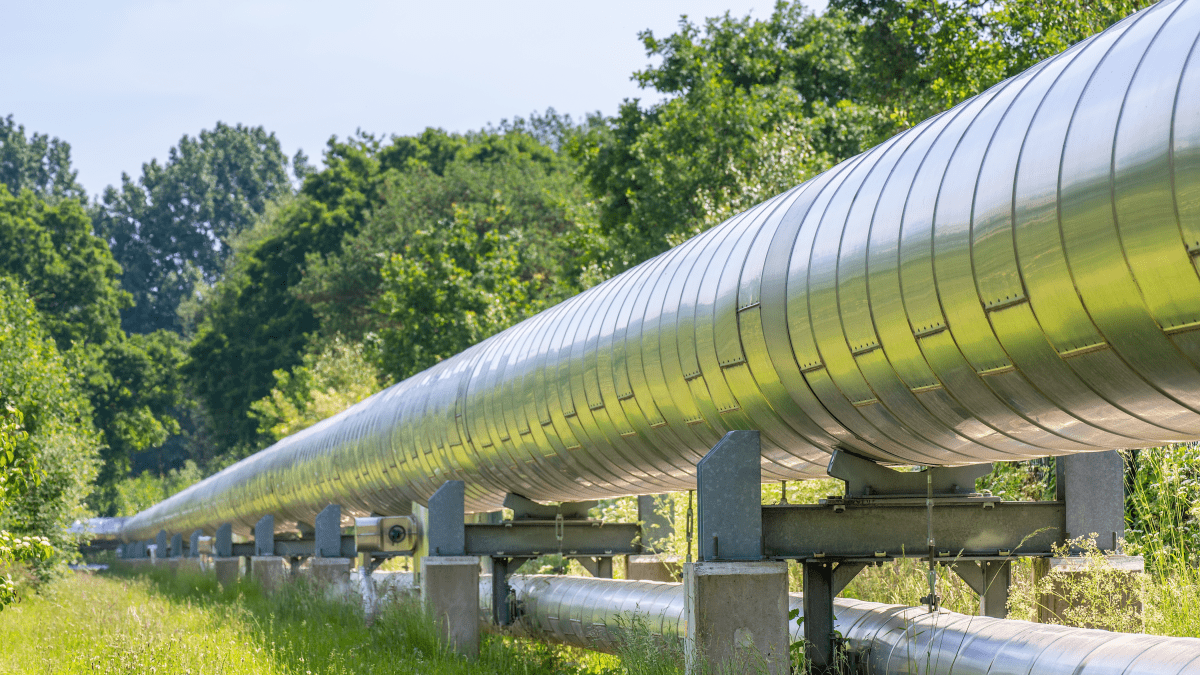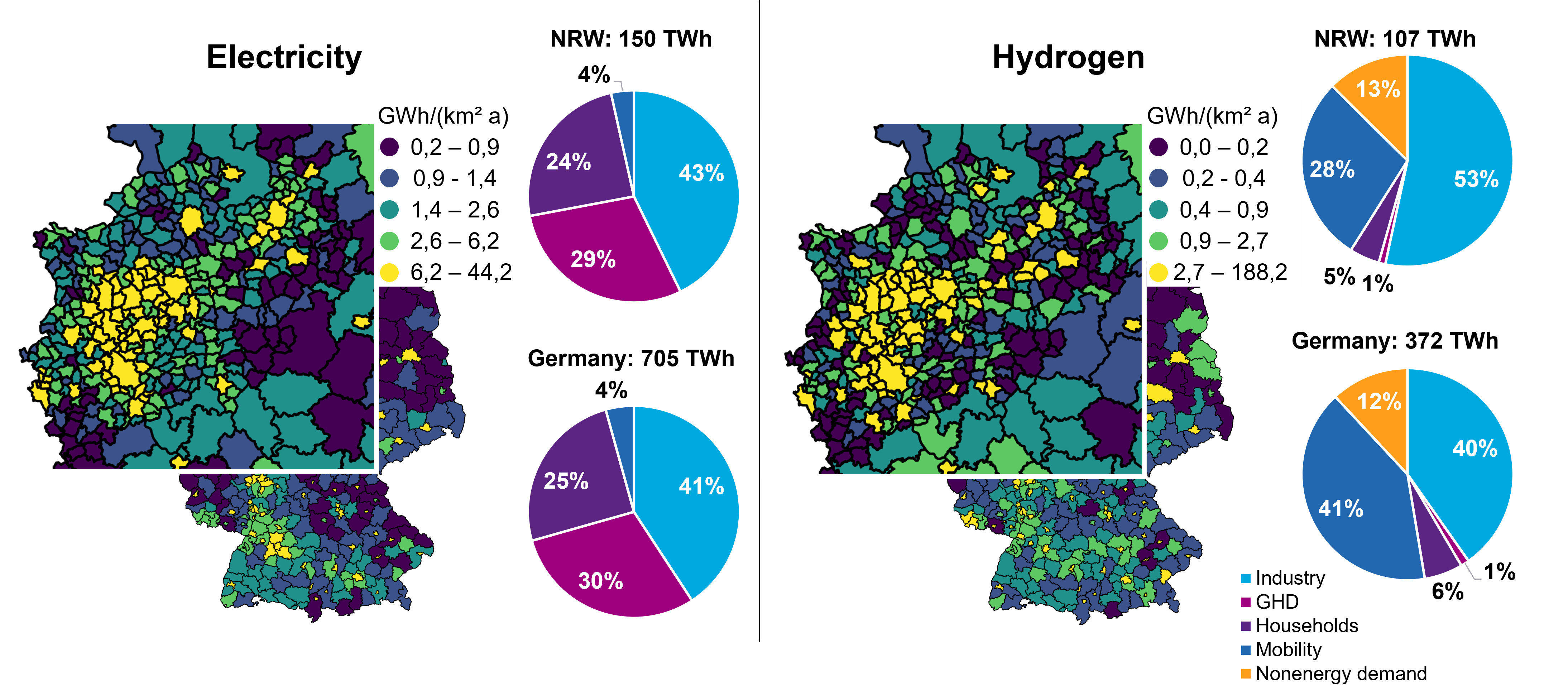
In the now completed project “Integrated Network Planning NRW,” a new approach was developed to consider the different energy infrastructures for electricity, gas, heat, and hydrogen in a cross-system manner and determine robust infrastructures. The Ministry of Economics, Industry, Climate Protection, and Energy of the state of North Rhine-Westphalia, together with the gas and electricity network operators Open Grid Europe, Thyssengas, Amprion, and Westnetz, presents a picture of the transformation path of these infrastructures towards CO2 neutrality.
To make the conversion of the energy system towards CO2 neutrality by 2045 as efficient as possible, the sectors of electricity, gas, heat, and hydrogen must be considered together. So far, the need for gas transmission networks and electricity transmission networks has been determined in separate processes according to different specifications. An established process for determining the demand for a hydrogen infrastructure does not yet exist.
Together with the Research Center Jülich and the Institute for Electrical Systems and Networks, Digitization, and Energy Economics (IAEW) at RWTH Aachen, the EWI developed possible scenarios and determined flexibility needs for NRW in the first project phase. In addition, demand time series of the different energy sources were regionalized with a previously unique level of detail.
By carrying out a deployment simulation of German RES plants and power plants, generation time series were also determined and documented on a community level. The regional highly detailed data and different scenarios allowed network operators to determine robust and cross-sector infrastructure needs as part of the project.
In addition to electrification, hydrogen plays a central role in the transformation of the economy towards climate neutrality: it is intended to supply parts of the industry that cannot electrify their production and depend on another energy source such as gas or hydrogen. Several companies of such industries are in NRW. The potential of offsite electrolyzers increases as the widespread increase in the feed-in of renewable energies. In NRW, electrolyzers would then represent multimodal hubs for electricity, hydrogen, water, and possibly district heating. The system-optimal location of the electrolyzers is carried out by the network operators themselves as part of the project.

The “Integrated Network Planning NRW” has shown in prototype that energy scenarios can be developed based on a common understanding of leading scenarios on a scientific basis. The insights from the process for “Integrated Network Planning NRW” are now intended to serve as preparation for corresponding processes at the country level, such as the work on a system development strategy taken up by the Federal Ministry of Economics and Climate Protection (BMWK) after the dena-III network study.
The publication of the Ministry of Economics, Industry, Climate Protection, and Energy of the state of North Rhine-Westphalia on the project “Integrated Network Planning” can be found at https://www.wirtschaft.nrw.